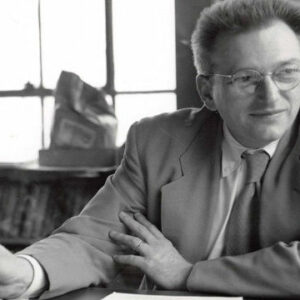John W. Campbell was an American writer and editor of science fiction. He began writing science fiction novels at the age of 18. He obtained a Bachelor of Science in Physics from Duke University after failing German at the Massachusetts Institute of Technology. Amazing initially published his stories. By age 21, he was a renowned science fiction author. Don A. Stuart, Karl Van Campen, and Arthur McCann were a few of the pseudonyms he used. His novel, The Most Powerful Machine, was warmly acclaimed. Its three sequels starring Aarn Munro were featured in The Incredible Planet. Until his death, he was the editor of the magazine ‘Astounding Science Fiction,’ and afterward renamed ‘Analog Science Fiction and Fact. He founded the fantasy publication Unknown. As an editor, he was instrumental in launching the careers of Robert A. Heinlein, Isaac Asimov, Arthur C. Clarke, A.E. van Vogt, and Theodore Sturgeon, as well as recruiting a large number of established authors. He authored a number of articles on electronics and radio and hosted the weekly science fiction radio program Exploring Tomorrow. He is considered one of the pioneers of science fiction’s Golden Age.
Youth and Early Life
John Campbell, Sr., and Dorothy Strahern Campbell gave birth to John Wood Campbell, Jr. on June 8, 1910. His father was a trained electrician. Young John could not distinguish between his mother and her identical twin.
The Massachusetts Institute of Technology was Campbell’s alma mater. After failing German, MIT expelled him.
Duke University granted him a Bachelor of Science in Physics in 1932.
At age 18, he began writing science fiction. The amazing magazine published six of his short tales, one book, and six letters between January 1930 and June 1931. By age 21, he was a renowned pulp author.
John Campbell’s Career
Amazing Stories was the American science fiction magazine where Campbell began his writing career. However, the editor misplaced his first manuscript, titled “Invaders of the Infinite,” which was accepted by the publication. In 1930, Amazing’s monthly and Quarterly published his second story, “When the Atoms Failed,” and five other stories.
He authored works such as “Twilight,” “Night,” and “Who Goes There?” under the alias Don A. Stuart, which was formed from his wife’s given name, Dona Stewart. He used the name Karl Van Campen as well.
The plot of “Who Goes There?” is centered on a group of Antarctic researchers who find a crashed alien vessel inhabited by a shape-shifting creature. In 1951, it was filmed for the first time as “The Thing from Another World.”
Under his own name, he began publishing a series of 18 monthly articles on the solar system in 1936. He also authored papers under the name Arthur McCann.
He was appointed editor of Astounding magazine beginning with the October 1937 edition. He labeled strange stories as “mutant” and altered the name of the publication from Astounding Stories to Astounding Science-Fiction.
He helped Robert A. Heinlein, Isaac Asimov, Arthur C. Clarke, A.E. van Vogt, and Theodore Sturgeon establish their careers. Authors of renown, including Hubbard, Leinster, and Simak, joined Campbell’s army.
The July 1939 issue of Astounding had the first stories by A. E. van Vogt, ‘Black Destroyer,’ and Isaac Asimov, ‘Trends,’ followed by Robert A. Heinlein, ‘Life-Line,’ and Theodore Sturgeon.
He believed that industrialization should have ended slavery and that the Civil War was needless. He assumed that the industrial management would hire an experienced and qualified machinist, regardless of race or color.
He wrote numerous publications on radio and electronics. Beginning in December 1957, he presented Exploring Tomorrow, a weekly science fiction radio program featuring scripts by authors such as Gordon R. Dickson and Robert Silverberg.
John’s Major Opera
In 1939, Campbell founded the fantasy magazine Unknown. It was canceled after only four years because to paper shortages during the war. However, it was significant in the development of modern fantasy.
Awards & Achievements
Campbell and Astounding split the first Hugo Award with H. L. Gold and Galaxy at the first World Science Fiction Convention in 1953. They have received seven Hugo Awards for Best Professional Magazine.
Personal History and Legacy
In 1931, Campbell and Dona Stewart were wed. They divorced after 18 years of marriage.
In 1950, he married Margaret Winter. There were three of them. Most of his life was spent in New Jersey.
He was a lifelong heavy smoker who was rarely seen without a cigarette. Due to his peculiar editorial demands, he alienated a large number of renowned authors.
He died of heart failure in New Jersey on July 11, 1971, at the age of 71.
Estimated Net Worth
John is one of the wealthiest and most well-known novelists. According to our investigation, Wikipedia, Forbes, and Business Insider, John W. Campbell has an estimated net worth of $1.5 million.


